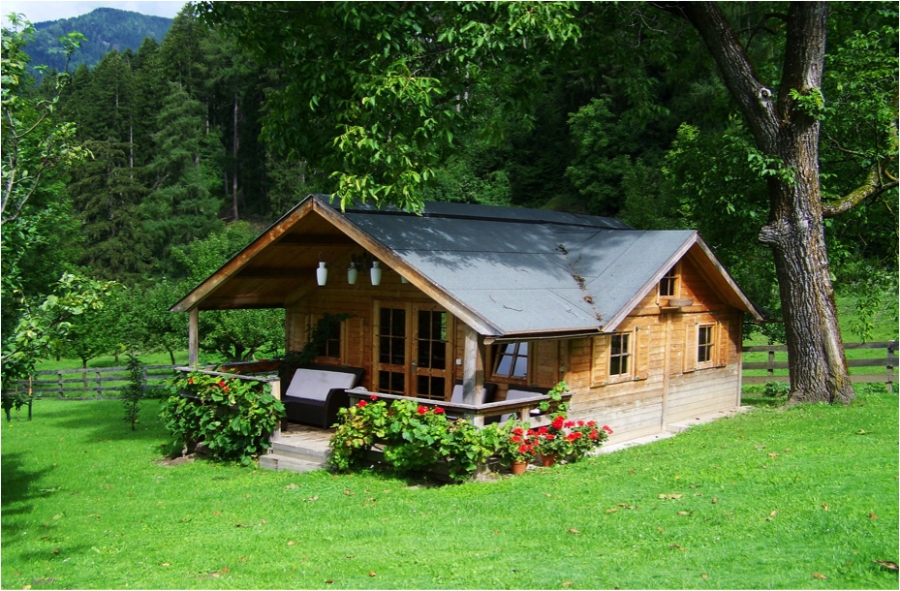Coyote, the son of Lily Tomlin’s character on the hit Netflix series Grace and Frankie, attempts to prepare a meal in his tiny home. Hilarity then ensues as he tries to maneuver through the dinky kitchen space without running into, or over, his girlfriend. Such is the reality of tiny home life, on TV and in true life. But that hasn’t stopped thousands of people from making the move to a space that’s a fraction of the size of a typical American home.
What was once written off as a short-term trend has proven to have staying power. And, tiny homes are no longer being associated primarily with millennials, either. There are plenty of stories of families choosing to live leaner. Tiny homes are now increasingly the choice of seniors, as well.
Tiny houses “can be an attractive option for retirees who want to downsize after the kids leave the nest,” said TODAY. “For one thing, they can come with major financial advantages. One retired woman TODAY profiled “paid $65,000 for her tiny house, an incredible bargain compared to Portland’s median home sale price of $394,100."
But that doesn’t make tiny living a breeze—especially for those who are used to more space. Here we’re breaking down the pros and cons.
Pro: Yes, they’re affordable
The price is right for tiny homes regardless of location.
“A tiny house costs a lot less to build than a full-sized one. According to The Tiny Life, it’s possible to build a tiny house for $23,000 on average. The average price for a full-sized house, by contrast, is $272,000—more than 10 times as much,” said Money Crashers. “Cutting back on housing expenses enables tiny house owners to put more money toward luxuries (such as travel), save for retirement, or simply work less.”
A tiny home also often means no mortgage, which, if the buyer can swing it, means they don’t have to pay interest and can own their home outright. “The Tiny Life reports that 68% of tiny house owners own their homes free and clear, as compared to just 29% of all homeowners.”
Con: Yes, they’re small!
Technically, this could also be a “pro” for those keen on tightening up their footprint, but, for most people, the idea of living in 100 to 400 square feet (the average size of a tiny home), is a deal-breaker.
“Living in a tiny home means you'll have to do a lot of sacrificing in order to downsize,” said Little House of Four. “More often than not you'll have to give up your private office, art studio or home gym. Your washer and dryer will more than likely end up in your bathroom or kitchen and you'll have to do some serious compromising when it comes to what you bring into the home. There are ways to remedy these ‘sacrifices,’ but you'll still be giving up your privacy and downsizing no matter how creative you get with storage.”
Pro: They’re portable
If you buy a traditional house, you’re not likely going to load it up on a truck and move it somewhere else when you desire a change of scenery. But, with a tiny home, that’s part of the allure. “A tiny house can easily be fitted on a flatbed truck, which makes delivering them to buyers, as well as future resettling really easy,” said Millennial Magazine. “Whether they are stuck with a bout of wanderlust, seeking new job opportunities, or just want to spend a season living close to a beach…millennials are sure to appreciate the fact that they can simply pack-up their house and go on their way.”
Con: Lack of personal space
Forget about that man cave or even a she shed. If you need a little space to yourself, that’s going to be hard to achieve in a tiny home. “Living in a tiny home by yourself might be easy, but sharing a small space with one or more people can be a challenge,” said Little House of Four. “There's no personal space to spend time alone or even roll out an exercise mat and get in a workout. Those of you that are extroverts may have no problem being in tight quarters with others, but introverts…may miss the alone time that a larger house can offer.”
Pro: They’re clever
You think you have some smart storage solutions in your home? Imagine what you’d need to fashion if you lived in 200 square feet! There are tons of great ideas out there. We’re digging the smart storage under the stairs here and the cabinet walls here.
Con: They still lack storage because they lack space
No matter how many witty ideas you come up with, you’re never going to have an ample walk-in closet and tons of kitchen cabinets—both of which are ingrained in the “typical” vision of the American dream.
Pro: They’re greener
Tiny homes are, by their very essence, more environmentally friendly simply because, “Their size means that they require substantially fewer building materials to construct, which makes it viable to use more expensive, eco-friendly components and still keep costs down overall,” said Millennial Magazine. Plus, “Relying on solar energy for heating and electricity is something tiny homes can brag about over other, less sustainable housing options.”
Con: Zoning Rules
“Although a tiny house doesn’t require much land, many towns make it difficult to build one,” said Money Crashers. “Zoning laws often include a minimum size for dwellings, and a 200-square-foot tiny house isn’t usually big enough to make the cut. To get around these rules, some tiny house owners buy a full-sized house, rent it out, and then park their tiny houses in the backyard as either ‘outbuildings’ or ‘vehicles.’ Trailer parks can also provide a home for a tiny house.”
